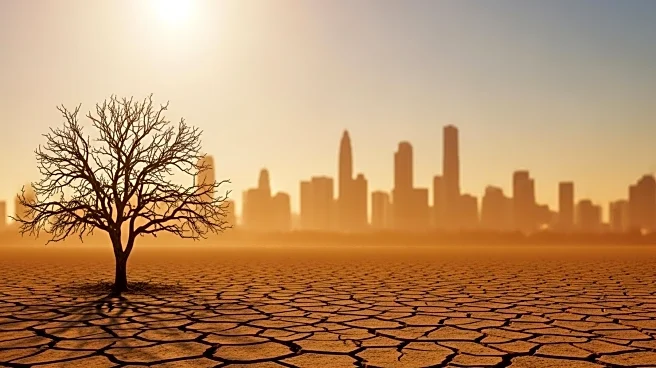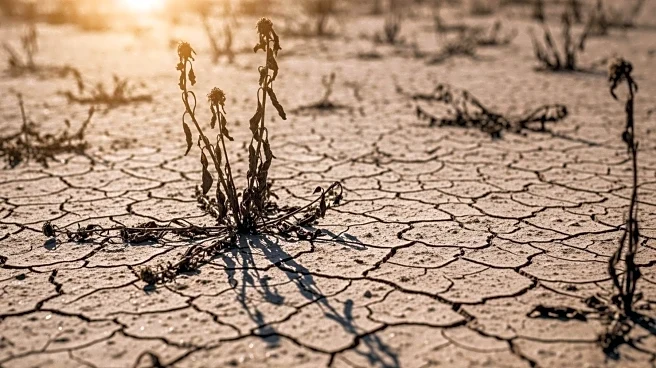What's Happening?
A recent analysis by the International Institute of Environment and Development (IIED) reveals a significant increase in the number of extreme heat days in major world cities. The study defines extreme heat as temperatures reaching 35°C (95°F) or higher. In 2024, the world's 40 most populous capital cities experienced a record 1,612 days of extreme heat, surpassing previous years. Cities like Washington DC, Tokyo, and Rome are among those experiencing the highest number of hot days. The report attributes this trend to the accumulation of greenhouse gases, emphasizing the urgent need for cities to adapt to climate change.
Why It's Important?
The rise in extreme heat days poses severe risks to public health, particularly for vulnerable populations such as the elderly and those without access to air conditioning. The urban heat island effect exacerbates these conditions, making adaptation strategies crucial. The findings highlight the broader impacts of climate change on urban environments, stressing the need for comprehensive policies to mitigate these effects. Failure to address these challenges could lead to increased mortality rates and strain on public health systems, particularly in low-income areas.
Beyond the Headlines
The report underscores the ethical and social dimensions of climate change, as the poorest communities are likely to suffer the most. The disparity in resources and infrastructure between wealthy and low-income areas could widen, leading to increased social inequality. The study calls for global cooperation and innovative solutions to address the challenges posed by extreme heat, emphasizing the need for sustainable urban planning and investment in renewable energy sources.











